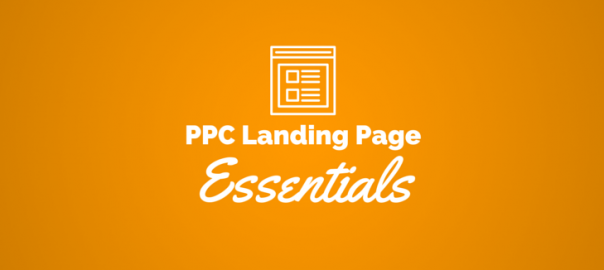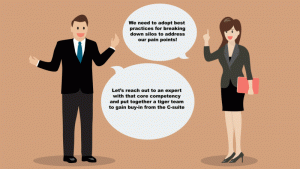
There’s more to advertising than just ads. In any online marketing campaign, there are extra elements that support the ads. One of these is the landing page.
Landing pages are separate pages from your homepage, that guide visitors to a destination. The destination depends on what type of landing page you have. The two main types are lead generating and click-through.
Hubspot says that lead generating landing pages help collect visitor’s information through a form. This simple idea can help generate leads from this information. Landing pages can also include a content/product offer in exchange for that information.
Click-through landing pages are focused on sales. It gives the customer more information between their initial interest and their purchase. Click-through landing pages ease the customer into placing the item in their shopping cart.
We’ve already discussed the basic anatomy of a landing page. Now it’s time to discuss the must-have components for PPC landing pages.
1. Remember Strong Message Match
Ever click on a button only to be lead to a page that has nothing to do with the reason you clicked? That’s a message match issue.
Message match is when your information in two separate places is uniform. So what the person expected when they clicked on your ad is what they got.
When writing copy for your landing page, you need to make sure your messages are the same. Because you pay per click, you want every person that lands on your page to count. So give them what they want.
The headline is the first thing customers see when they land on your page. It needs to make it clear they’re in the right place. Use the headline from your PPC ad. That way your visitors recognize the consistency.
According to Unbounce, this clarifies the goal for everyone involved.
Visitors judge headlines first, so make them count!
Really drive home the information that got them interested in the first place. Clarity and consistency in texts are key for avoiding reader confusion.
Which brings us to…
2. Use Bullet Points
When you’re looking to buy a product, you like to know information about it right? Of course you do, everyone does!
Having clean, readable copy does just that. “Easy peasy” copy on your landing page guides visitors into leads or customers. The easier it is for your customer, the more likely they’ll understand what you’re saying. And what should you be saying exactly? Hyping up the benefits.
Benefits will help connect your product to the customer. Once they see how it will help them, they’ll be ready for that next step.
The best and cleanest way to present this is through a bulleted list. Here’s why:
- It draws the eye in towards your information
- Bullets help organize information into a tidy package
- It makes your content easier to skim
Now from that bulleted list alone, you can see the benefits. Your eyes were drawn towards it because it had an added design element of bullets. Plus, all the information you needed was in one place, and you could skim it easily.
This way, they don’t waste time looking elsewhere. Plus, they aren’t slowed down by reading long paragraphs.
They’re already on your landing page, so you want to keep them from reverting back. You don’t want them to turn away by offering too little or too much information.
3. Write Strong Calls-to-Action
In Landing Pages 101, we said easy contact forms and calls-to-action are a must have for your landing page. This still holds true.
Your calls-to-action can be used to transfer customers from one page to another. These buttons literally call a customer into action. The key is that they need to be relevant.
When it comes to enticing customers to click your calls-to-action, wording is key. The same message match concept applies here. Write what the customer gets by clicking the call-to-action to avoid confusion and drive home the offer.
So instead of a “Submit” prompt, have a button that says “Subscribe Now.” or “Add to cart.” This simple change reiterates your goal, and assures the customer of what they’re doing.
If they just see a generic button, they may be confused about what they’re signing up for. Especially if the rest of your copy isn’t clear. Take away that ambiguity.
4. Display Trust Indicators
Trust is important to customers. They want their information to be handled with care if they convert. If you seem sketchy, they probably won’t follow through.
One way to build trust is through trust indicators, which back up your claims with other people’s approval.
You can show visitors proof from previous and current customers. This can be testimonials, customer counts, reviews, or awards and certifications.
People are reassured when they see that other people converted, and benefited from it. Another simple option is to show how many social media shares your page has, or the size of your social following. This shows people that others find your information helpful, and they will too.
Final Thought
The best PPC landing pages all have something in common: the visitors are the main focus. Making the page easy for them to read and navigate will benefit you both.
(329)
Report Post




